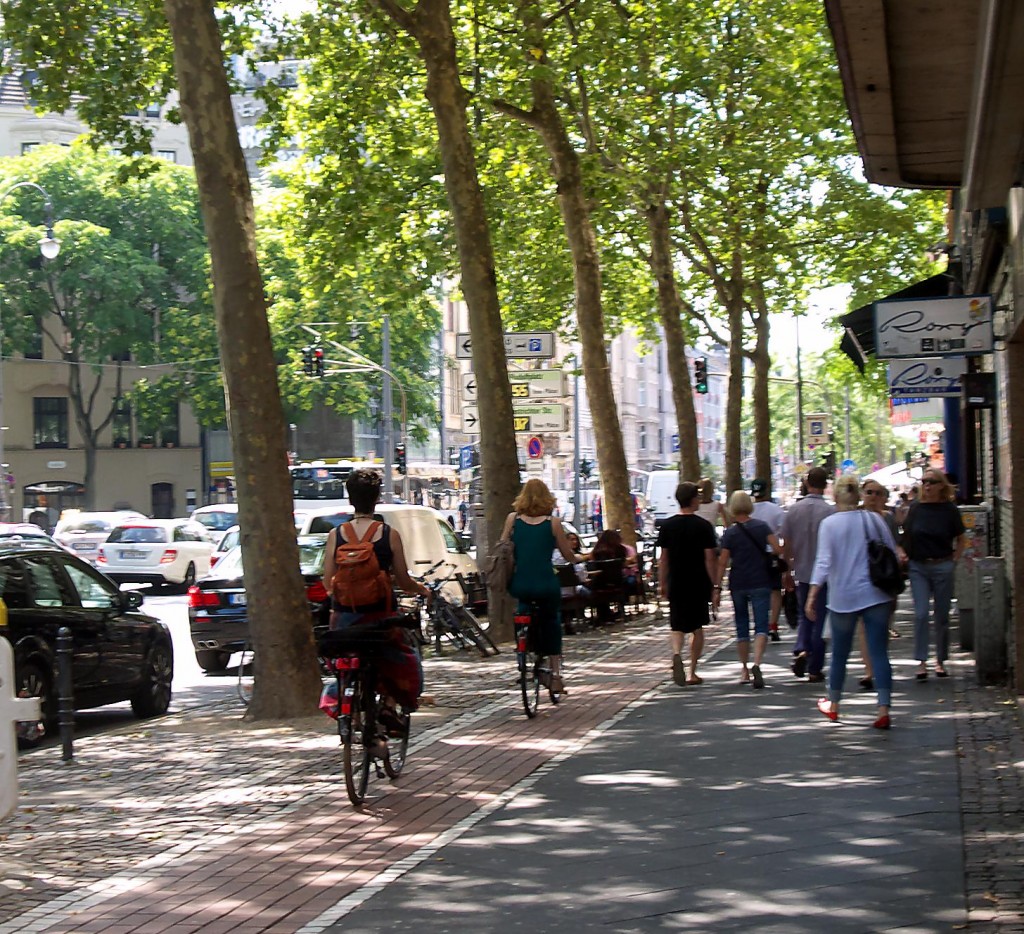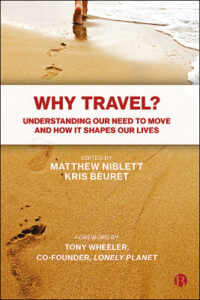Active Travel Being Encouraged Worldwide: physically active mobility has wide-ranging benefits for the health and liveability of cities
15th March 2015
As global mortality rates due to physical inactivity and air pollution grow, authorities are increasingly encouraging people to leave their cars and take up ‘active travel’ – mobility which involves physical activity, such as walking, cycling or skating.[1] National and local governments are bringing in new policies and investing in infrastructure to promote active travel; and some are aspiring to emulate the examples of The Netherlands and Copenhagen where some 24-40% of in-city journeys are made by bicycle.[2]
Within the UK, recent developments include the construction of cycle superhighways in London and plans by the Mayor of Bristol, George Ferguson, to double cycling from 2013 levels by 2020.[3] There is also evidence that the move towards more active travel is not just being imposed from above. The recent Sustrans Bike Life Report found that 75% of people support increased government spending on infrastructure to make walking and cycling safer and more convenient, and that many also want to participate more in active travel themselves.[4]The Welsh Government has even enacted active travel into law through its Active Travel Act (2013), which requires continuous improvement of facilities and routes for pedestrians and cyclists, provision of information for the public and the promotion of active travel.[5]
Europe is well-represented in numerous ‘best cities for cycling’ surveys[6] but cities worldwide are keen to reduce congestion and encourage cycling and walking. For example, in Taiwan, once known as the ‘Kingdom of the bicycle’, the Taipei government has opened up new cycle routes and allows cyclists to use pavements. Encouraging active travelers – cyclists and pedestrians – to share space is viewed as the safest option on Taipei’s dangerous roads, rather than requiring bicycles to share the roads with motorized vehicles – as is more typical in Northern Europe. These measures, along with the introduction of the cycle-share system You Bike, have helped contribute to a big growth in bicycle use in the city; and an estimated 35% of the people who are now using YouBike have switched from cars and mopeds.[7] Whilst sharing pavement space may be encouraging active travel in Taipei, pedestrians and cycles sharing paths and pavements can result in conflicts and safety risks, and this approach has criticized by both pedestrian and cycling campaigners in the UK and many cities across the world.[8]
The benefits of active travel are wide-ranging, including health benefits of physical activity – and associated benefits to mental health – and positive impacts on air quality and carbon emissions.[9] But active travel also affects the more nebulous but hugely important issue of the ‘liveability’ of cities. According to Charles Lin, deputy mayor of Taipei and a professor in urban planning “Mobility decides the image of the city [for visitors and residents and] determines the way we live in the city.” This can have far-reaching effects economically, socially and psychologically for the city’s residents. For example, research from New York and Portland (USA) and Melbourne (Australia) has found that provision of cycle infrastructure like cycle-parking and bike lanes has resulted in significant increases in retail spend in those locations.[10] Cyclists and pedestrians, travelling more slowly and less sheltered by metal and glass than their car-bound counterparts, are more likely to be attracted by shops as they pass by and to be able to stop easily.
Active travel fulfills our practical need to get conveniently from A to B; but it also taps in to our fundamental enjoyment of movement itself and to the satisfaction we gain from experiencing the world through which we are travelling rather than being cocooned from it. Activities like walking and cycling (and a corresponding decrease in car use) can have a snow-ball effect, becoming safer and more popular the more people do it. This means that travel behaviour can change relatively rapidly with just a few changes to infrastructure or policy. If we are to plan better for healthy, “liveable” cities, it is essential that we better understand our desire to travel in an active and engaged way, and the motivations which can lead us to change our travel behaviours. The ITC’s Why Travel? Project has been set up to explore the complexity of human travel motivations and behaviours in the belief that a better and more realistic understanding of why we travel can and should be used to make better decisions about travel at individual and policy levels. The project brings together experts from across the arts, humanities and sciences, exploring cutting-edge research and modern movements like slow travel, as well as looking back into our evolutionary past and human history for insights into why we travel in the ways we do. For more information on the project, including expert views and news stories, see www.whytravel.org.
[1] Physical inactivity and air pollution are both considered to be in the top 10 causes of death worldwidehttp://www.livescience.com/52189-air-pollution-kills-millions-people-yearly.html and http://www.who.int/mediacentre/factsheets/fs385/en/
[2] http://www.theguardian.com/environment/bike-blog/2015/oct/21/cycling-three-quarters-britons-support-more-spending-bike-use
[3] http://www.cyclingweekly.co.uk/news/latest-news/five-uk-cities-outside-london-with-dutch-style-cycle-infrastructure-154996#KumwEUDuDfr9UhAM.99
[4] http://www.sustrans.org.uk/bike-life/overall-survey
[5] http://www.senedd.assembly.wales/documents/s49190/Report%20-%20Active%20Travel%20The%20Start%20of%20the%20Journey.pdf Also see the recently released report by The Enterprise and Business Committee (EBC) of the National Assembly for Wales, which has been examining the progress and delivery of the Act: http://www.assembly.wales/laid%20documents/cr-ld10582/cr-ld10582-e.pdf
[6] For example the 2015 Copenhagen Index, which has given 122 global cities a bicycle-friendly ranking and the top 15 cities are all in Europe: http://copenhagenize.eu/index/index.html
[7] http://www.theguardian.com/cities/2016/mar/15/bicycle-kingdom-reborn-pavement-cycling-taipei-taiwan
[8] For example, a number of cities have set speed limits for cyclists on paths shared with cyclists: http://www.aviewfromthecyclepath.com/2014/11/shared-use-paths-create-conflict-and.html
‘Shared use schemes’ where pedestrians and all vehicles (human-powered and motorised) have drawn particular criticism from disability campaigners: http://www.transportforall.org.uk/news/new-report-calls-for-a-moratorium-on-shared-space-schemes
[9] Physical activity is well-known to be linked with benefits to mental health in the long and short term: http://www.journals.elsevier.com/mental-health-and-physical-activity/ A daily walk has been shown to be as effective as anti-depressant drugs in treating depression in some cases: http://www.health.harvard.edu/mind-and-mood/exercise-and-depression-report-excerpt
[10] https://www.bicyclenetwork.com.au/general/policy-and-campaigns/2792/



